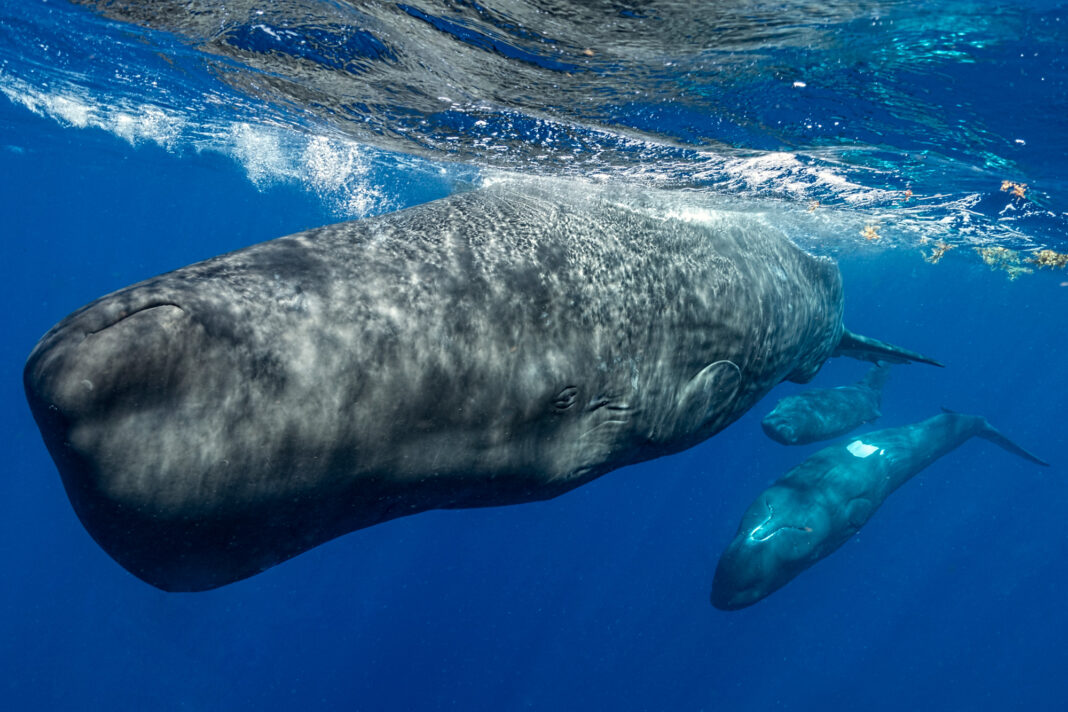In Short:
Whales have always fascinated humans, from mythology to science fiction. Researchers from MIT and Project CETI used machine learning to decode sperm whale communication, revealing a complex system with distinct structures. By studying sperm whale families in the Eastern Caribbean, they found that codas had specific patterns based on context, challenging the belief that only humans have complex communication. This research could help understand alien communication and other animal languages.
The Enigma of Sperm Whale Communication Decoded
The allure of whales has captivated human consciousness for centuries, portraying these ocean giants as mysterious inhabitants of the deep seas. From the biblical Leviathan to Herman Melville’s iconic Moby Dick, whales have played a central role in mythologies and folklore. Despite advances in cetology, studying whales has remained a formidable challenge.
Decoding Sperm Whale Communication
A recent study published in Nature Communications by researchers from the MIT Computer Science and Artificial Intelligence Laboratory (CSAIL) and Project CETI, sheds light on the complex communication system of sperm whales. Through the use of machine learning algorithms, the researchers decoded the “sperm whale phonetic alphabet,” revealing intricate structures in sperm whale communication similar to human phonetics and communication systems found in other animal species.
Complex Communication System
Analysis of nine thousand codas collected from Eastern Caribbean sperm whale families unveiled a structured and complex communication system. The team employed a mix of algorithms for pattern recognition and classification, along with on-body recording equipment, to decipher the nuances of sperm whale communication. They identified various elements such as “rhythm,” “tempo,” “rubato,” and “ornamentation” that interplay to form a wide range of distinguishable codas, indicating a highly sophisticated communication system.
Implications and Future Research
The study challenges the prevailing belief that complex communication is unique to humans and offers new insights into the communication complexity of other species. The researchers aim to decipher the meaning behind these communications and explore correlations between what is being said and group actions among sperm whales.
Contributions to Science
Whales owe much to Roger Payne, a former Project CETI advisor, whose work on whale songs catalyzed conservation efforts to protect these marine mammals. Today, Project CETI’s research aims to unlock the communicative intents behind elements like rhythm, tempo, ornamentation, and rubato, potentially offering insights into the intricacies of non-human language.
Potential Alien Communication Insights
The unique biological and environmental constraints of whale communication parallel the hypothetical scenario of contacting alien species. Researchers believe that the work could lay the groundwork for understanding how an “alien civilization” might communicate, paving the way for decoding unfamiliar forms of communication.
Key Players: Daniela Rus, David Gruber, Pratyusha Sharma, Shane Gero
The study was funded by Project CETI via Dalio Philanthropies and other organizations, with additional support from The Audacious Project and the J.H. and E.V. Wade Fund at MIT.





